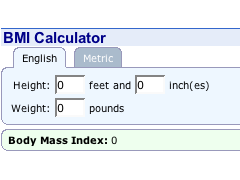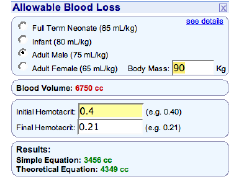Skim for OS X
A new application called Skim has been released for Mac OS X and I mention it here for readers who stuff their hard disks with pdf files of articles they have heretofore been unable to annotate electronically:
[Michael McCracken]
A new application called Skim has been released for Mac OS X and I mention it here for readers who stuff their hard disks with pdf files of articles they have heretofore been unable to annotate electronically:
[Michael McCracken]
Download of the Day: Gmail Manager (Firefox) - Lifehacker
A must-have for a Firefox Gmail user
Let's say you're like me use hospital computers a great deal. There are some neat tools you should know about to make hospital computers feel more like home. Here are my suggestions:
1. Use a USB thumb drive and install Portable Firefox.
Every hospital computer I've ever used has Internet Explorer as the default browser (sigh). Most don't allow you to install your own software. Having a USB thumb drive with your own lean, mean, pop-up blocking copy of Firefox gives you the browser preferred by nine out of ten dweebs. Any extensions you install are on the USB drive and travel with you. Lifehacker has a nice article on this. Speaking of extensions...
2. If you haven't already done so, get a Google account.
3. Install the Google Browser Sync Extension for Firefox.
I may get around when it comes to using lots of computers, but I do have a first love--my Apple MacBook. (The mooing sounds it makes are just so endearing). And that's where I spend most of my computer time and subsequently have the best organized set of bookmarks. The Browser Sync Extension synchronizes bookmarks, history, persistent cookies, and saved passwords between computers. For more on the security implications, see Lifehacker...
4. Install the Google Notebook Extension for Firefox.
I will occasionally find web content when I'm at the hospital that I want to look at when I get back home. The Notebook extension adds an additional contextual menu option to 'Note This...' which adds the page title, URL, and selected text to my Google Notebook where I can read it later.
5. Set up your Google Home Page and add the Body Mass Index and Allowable Blood Loss modules!
Seth Dillingham and I have created two modules for the Google personalized home page : Allowable Blood Loss and BMI Calculator. Despite having been submitted a week ago they are still not included in their directory, but I thought it safe to post about them here....
 |
BMI calculates the Body Mass Index using the US or metric system. Furthermore, it can be used to convert from one system to the other. |
 |
The Allowable Blood Loss Calculator gives a fairly good estimate of how much blood a patient would have to lose to cause a drop in hematrocrit to a specified amount assuming euvolemia is maintained. |
Greg's "Pragmatic Security," for the Rest of You ;-):
[Via Truer Words - A Journal]
There's more to search than Google--especially for medical topics. I often need to go search eMedicine, Cochrane, Pubmed, specific journals (NEJM and Anesthesia & Analgesia are two I use often) or even a Google sub-site (plain, news, images, scholar, maps) . One way to do this is to go to each home page, find their search box and, well, search! Ah, but there's a better way and it's called iSeek (MacOS X only).
What you're really doing when you use a search box on a site is submitting a search request in their syntax. If you know the syntax, you can submit a search request without actually going to the site. If you look at the address bar after you submit a search on a site, you're looking at their search syntax. For example, if I do a search on Google Scholar for 'hyperthermia,' I see the following url in the address bar:
http://scholar.google.com/scholar?hl=en&lr=&safe=off&q=hyperthermia&btnG=Search
Now, it's a bit much for us to memorize that string of text, but computers are very good at that sort of thing...and that's where iSeek comes in. Here's what iSeek looks like in my menu bar (it's the text field with the magnifying lens):
And here's what the iSeek menu looks like with all my favorite search sites:
To search at one of the listed sites, I select the site (in this case eMedicine), enter the search term in the text field, and hit 'return.' iSeek takes my search term, slaps on the right prefix and suffix to put the search term in the right format, and submits it. The results appear in a new tab in my web browser.
If the thought of figuring out the right text strings bother you, fear not. The makers of iSeek have an extensive list of search engines you can add directly from their site.
Rumor has it that Apple will release its next iteration of MacOS X, code named 'Tiger', in April. One component of it that is not a rumor is its new built-in search engine called Spotlight (tech preview pdf). The list of supported files types includes (but is not limited to):
How might this be useful to a clinician? For years now, I've been dropping files onto my hard drive because they contains information I want to have access to in the future. I have an entire textbook of anesthesiology as html files. Literally hundreds if not thousands of pdf files of articles I've saved from NEJM, Anesthesia & Analgesia, and other journals. Every lecture I've ever given. All the CME I've ever done (if available electronically).
I have tried mightily to keep it all organized. Seth Dillingham actually made some software for me to be able to use a local webserver to organize, index and serve all those files on my local machine. Extended to something we called the Reference Laptop Project, we endeavored to put everything an anesthesia resident could need during their training on a $1,000 20 GB Apple iBook, complete with automatic updating of reference materials via wireless LAN. I've installed Plone and learned some Python to be able to make a system that works for me. But now, finally, coming to OS X, is the core technology that will allow me to do what I want as a feature of the operating system itself, or perhaps even as a custom application.
Underneath it all, there's even an API that lets applications access Spotlight's power. Imagine a new application that imposes a structure on the information you already have or will add! As an example, imagine an outline of relevant topics in anesthesiology. For each topic, the application would use Spotlight to create Smart Folders for, say, information on malignant hyperthermia, and airway management, and peri-operative beta blockade. I have a great deal of information on each of these topics already on my hard drive. Some in the Documents folder, some under Sites. Some exists as HTML files, some as PDF, some as powerpoint. And as I add more information, the Smart 'Chapter' will automatically update. Perhaps the very capable makers of Delicious Library will explore creating 'Delicious Reference' just for me.
The future is here. It's just not evenly distributed yet. --William Gibson
Instead, he recommends pass-phrases:
PalmSource maintains an excellent resource for anesthesiologists (thanks to Donald M. Voltz, M.D.) at Palm Anesthesiology which includes:
Software
Included is some billing software I'm going to have to review...
Orac Knows points to a really nifty use of rss for those of us that use PubMed for literature searches called HubMed and use RSS. HubMed offers 'RSS feeds of literature queries - updated daily'. For example, I can enter a search string like 'liver transplant anesthesia' and get a nice list of hits on a web page. Encoded in the html of the page is the url for the rss feed of this search. Handing the html page url to your news reader/aggregator allows it to 'discover' the rss url for you. After that, your news reader will highlight any new references the search turns up.
| April, 2007 | ||||||
| Sun | Mon | Tue | Wed | Thu | Fri | Sat |
| 1 | 2 | 3 | 4 | 5 | 6 | 7 |
| 8 | 9 | 10 | 11 | 12 | 13 | 14 |
| 15 | 16 | 17 | 18 | 19 | 20 | 21 |
| 22 | 23 | 24 | 25 | 26 | 27 | 28 |
| 29 | 30 | |||||
| Mar Jun | ||||||
![]()